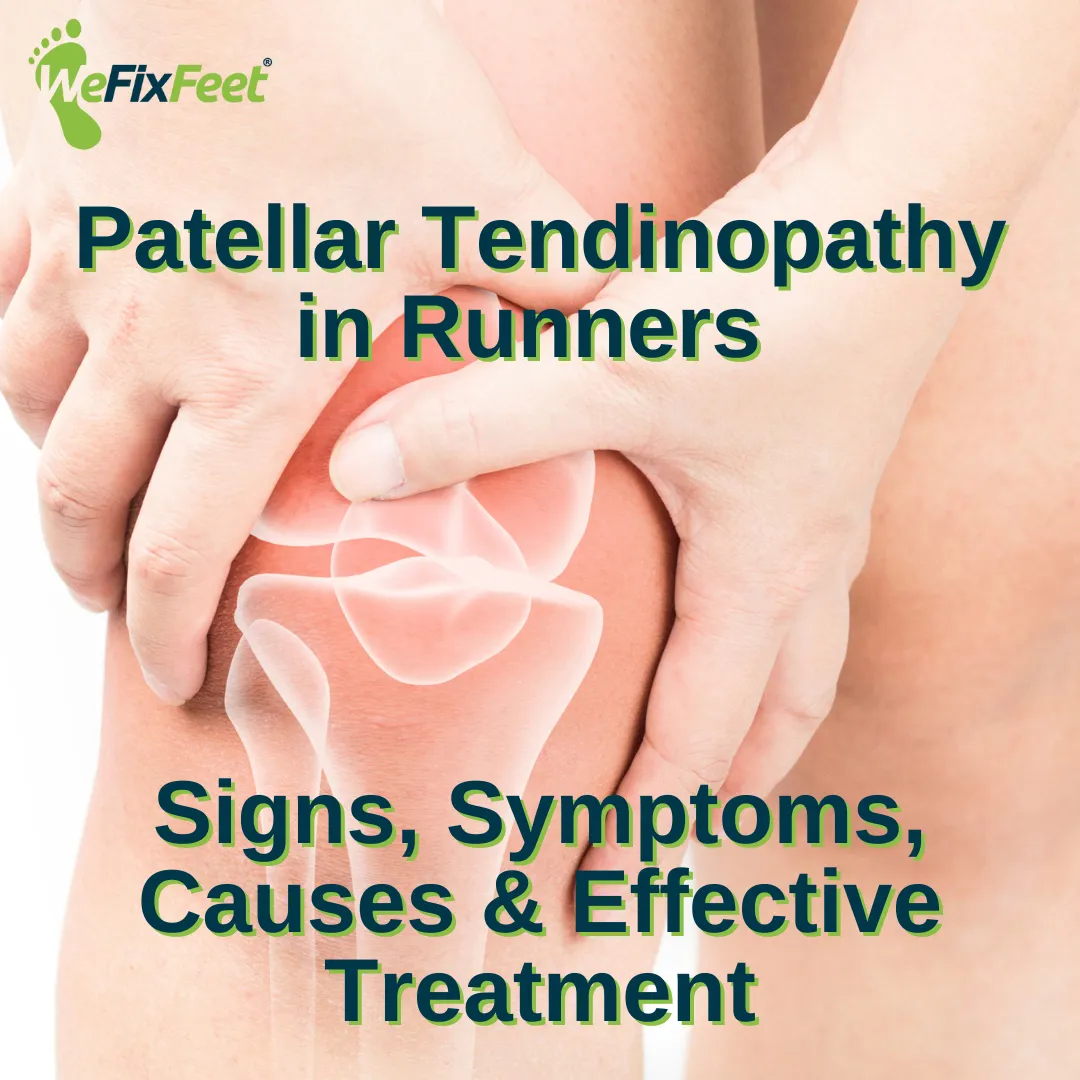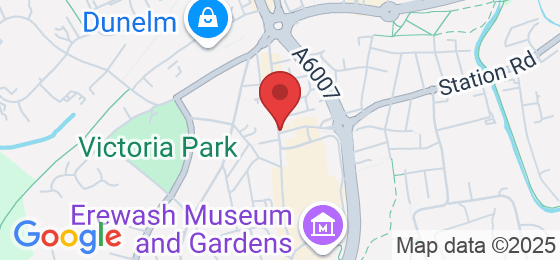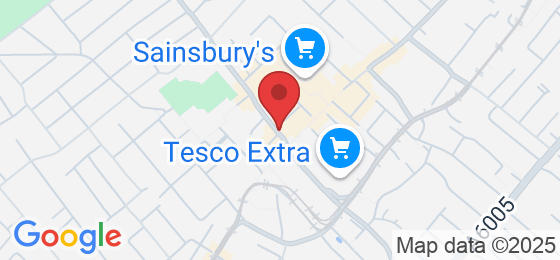
Patellar Tendinopathy in Runners: Signs, Symptoms, Causes, and Effective Treatments

Patellar Tendinopathy in Runners: Signs, Symptoms, Causes, and Effective Treatments
Running is an excellent way to stay fit and healthy, but it can sometimes lead to injuries, particularly in the knees. One common knee condition that affects runners is patellar tendinopathy, also known as jumper's knee. This condition involves pain and inflammation in the patellar tendon, which connects the kneecap (patella) to the shinbone (tibia). Understanding the signs, symptoms, causes, and treatment options for patellar tendinopathy is crucial for managing and preventing this painful condition.
Signs and Symptoms:
Patellar tendinopathy typically presents with the following signs and symptoms:
Pain at the front of the knee, just below the kneecap
Tenderness and swelling around the patellar tendon
Stiffness in the knee, especially in the morning or after periods of inactivity
Pain that worsens with activity, particularly running, jumping, or climbing stairs
Weakness in the knee, making it difficult to perform usual activities
The pain may start as a minor ache but can progress to more severe discomfort if not addressed promptly. Runners often notice the pain intensifies during or after running sessions, especially when running downhill or on uneven surfaces.
Causes:
Patellar tendinopathy is primarily caused by repetitive stress and overuse of the patellar tendon. Several factors can contribute to the development of this condition, including:
Sudden increase in running intensity or mileage
Inadequate warm-up or poor running technique
Wearing worn-out or inappropriate running shoes
Running on hard or uneven surfaces
Muscle imbalances or weaknesses, particularly in the quadriceps and hamstrings
Additionally, factors such as age and previous knee injuries can increase the risk of developing patellar tendinopathy. As tendons lose their elasticity and strength over time, they become more susceptible to injury.
Effective Treatments:
Managing patellar tendinopathy requires a multifaceted approach that includes both immediate pain relief and long-term solutions to address the underlying causes. Here are some effective treatments for runners dealing with patellar tendinopathy:
1. Biomechanical Assessment:
A biomechanical assessment involves analysing your running gait and posture to identify any abnormalities or imbalances that may be contributing to your knee pain. A podiatrist or physiotherapist can conduct this assessment and provide personalised recommendations to improve your running technique and reduce stress on the patellar tendon.
2. Custom-Made Orthotics:
Custom orthotics can provide additional support and correct any alignment issues in your feet and lower limbs. These orthotics are designed to distribute pressure more evenly and reduce the strain on the patellar tendon, helping to alleviate pain and prevent further injury.
3. Class IV Laser Therapy:
Class IV laser therapy is an advanced treatment that uses high-intensity laser light to reduce inflammation and promote tissue repair at the cellular level. This non-invasive therapy can accelerate healing, reduce pain, and improve overall tendon health, making it an effective option for treating patellar tendinopathy.
4. Shockwave Therapy:
Shockwave therapy involves delivering high-energy sound waves to the affected area to stimulate healing and reduce pain. This treatment can enhance blood flow, break down scar tissue, and promote the regeneration of healthy tendon tissue. Shockwave therapy is particularly beneficial for chronic cases of patellar tendinopathy that have not responded to other treatments.
5. Sports Massage:
Sports massage can help alleviate muscle tightness and improve circulation in the lower limbs. Regular massage sessions can reduce tension in the quadriceps, hamstrings, and calf muscles, which can, in turn, reduce strain on the patellar tendon. Sports massage also promotes relaxation and helps prevent future injuries by maintaining muscle flexibility.
Additional Home Treatments:
In addition to professional treatments, there are several home remedies and lifestyle changes that can help manage patellar tendinopathy:
Rest and Ice: Resting the affected knee and applying ice packs can help reduce inflammation and pain. It's important to avoid activities that exacerbate the pain until the tendon has healed.
Strengthening Exercises: Strengthening the muscles around the knee, particularly the quadriceps and hamstrings, can improve knee stability and reduce the risk of further injury. Exercises such as leg presses, squats, and lunges can be beneficial.
Stretching: Regular stretching of the quadriceps, hamstrings, and calf muscles can improve flexibility and reduce tension on the patellar tendon.
Proper Footwear: Wearing supportive running shoes with adequate cushioning can help absorb shock and reduce stress on the knees. It's essential to replace worn-out shoes regularly to maintain proper support.
Patellar tendinopathy is a common condition that can significantly impact a runner's performance and quality of life. By understanding the signs, symptoms, causes, and treatment options, runners can take proactive steps to manage and prevent this condition. A combination of professional treatments, such as biomechanical assessments, custom orthotics, class IV laser therapy, shockwave therapy, and sports massage, along with home care and lifestyle modifications, can provide effective relief and promote long-term tendon health.

If you're experiencing knee pain while running and suspect you may have patellar tendinopathy, don't wait to seek help. Contact We Fix Feet for a comprehensive evaluation and personalised treatment plan. Book an appointment online or call us at 0115 9328832 to start your journey towards pain-free running and optimal knee health.
Ask The We Fix Feet Team
Fill in the form to request a Call From Our Team
One of our team will call you for FREE and answer any questions or concerns you may have about your uncomfortable foot condition

Where To Find We Fix Feet
Our We Fix Feet podiatry clinics are conveniently located in Ilkeston, Derbyshire and Beeston, Nottinghamshire
Open: Mon-Fri 09:00-17:00 / Sat 09:00-13:00
94 Bath Street, Ilkeston, Derbyshire DE7 8FE
8 Wollaton Road, Beeston, Nottinghamshire NG9 2NR
Pay and display parking nearby




